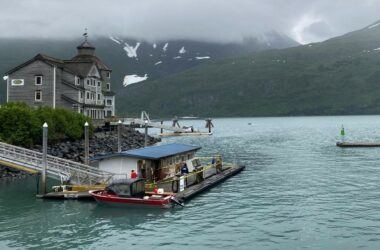The U.S. Environmental Protection Agency granted the Alaska Native Tribal Health Consortium $184,000 from the Water Infrastructure Improvements for the Nation Act to identify sources of lead in drinking water in tribally operated schools and childcare facilities.
The Agency is providing $4.3 million to participating tribes and tribal consortia nationwide under the EPA’s Voluntary Lead Testing in Schools and Child Care grant program. The funding supports the creation or expansion of programs to test for lead in drinking water at schools and child-care programs in tribal communities and states.
Michelle Pirzadeh, EPA Region 10 Acting Regional Administrator:
“Schools should be safe places for students to learn and grow. We know there is no safe level of lead for children, and with this funding, tribes will be able to help protect their children by making their schools and childcare centers healthier and safer.”
The Alaska Native Tribal Health Consortium’s approach in assisting rural schools and childcare facilities to combat lead exposure will be multifaceted. Initially, they plan to test drinking water in rural school districts and childcare facilities, where most Native Alaskan student populations live. Then, they will provide education about lead exposure to the participating rural school districts and childcare facilities. Participating schools and childcare facilities will use EPA’s 3Ts (Training, Testing, Taking Action) for Reducing Lead in Drinking Water in Schools to implement lead in drinking water testing programs to include identifying sources of lead such as fountains.
Francine Moreno, Manager of Utility Operations for ANTHC:
“The Alaska Native Tribal Health Consortium appreciates the opportunity presented by EPA to work with schools and childcare facilities in rural Alaskan communities to identify, support and train on lead exposure in drinking water. Lead identification and education is the first step to reducing negative health impacts to our rural Alaska families and future generations.”
Lead is especially dangerous to children because their growing bodies absorb more lead than adults, and their brains and nervous systems are more sensitive to the damaging effects of lead, according to an EPA press release. As part of its efforts to reduce lead in drinking water, EPA’s Water Infrastructure Finance and Innovation Act program has funded over $24 billion in projects to modernize aging water infrastructure.






